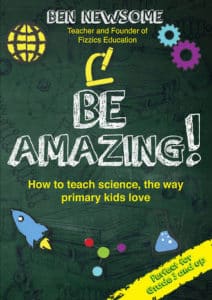
Time to bring out the drones!
The advent of drones has been heralded a potential game-changer in certain industries. Quite a few readers will be well aware of Amazon’s interest in creating delivery drones for their online shopping business via Amazon Prime Air, you might have even heard of Dominos Pizza Delivery drone too (see below). The consumer market is booming with drones that are within budget limits for some families and such some kids in your classroom might very well be using drones on a regular basis. So, let’s look at some ways you can work with your student’s interest in this technology to give students a new view of science from above!
As drones have camera’s attached them to help the remote person to control the device, you can use this birds-eye view of the world to give students a unique perspective of science concepts whilst using a gadget they love. Here are just a few ideas that you could use to capture the imagination of students in a science education context using drones:
1. As you can control the height at which the drone flies you can effectively control how close the onboard camera is to any given object below… this means that you can fly lower to ‘zoom in’ and fly higher to ‘zoom out’. This could be an analogy to that of a microscope focusing on a prepared slide! Why not have students pretend that the camera view is that of a microscope and get them to construct large versions of cell structures on the ground? You could also use the same idea to create the structure of a leaf cross-section or perhaps maybe a neuron? No matter what you choose you could then call out the structures you would like the students to ‘zoom in on’. This might be a fun twist on the classic ‘build me a model’ lesson plan and in reality, the students could create models of any object that you’re interested to view.
2. You could create a line of planets in our solar system, all marked out at the correct relative distances along the length of your school oval. This time you could launch the drone from ‘Planet Earth’ and then have the students measure how long it takes for the drone to reach the various ‘planets’ to land. This activity would be analogous to the time it would take to send a real spacecraft to objects in our solar system and is simply an extension of the classic solar system model lesson plan.
3. Why not use the drone’s video feed to map your local bushland area? By taking photo stills from the video taken, your students could create maps of areas of undisturbed bushland vs. areas where the urban impact is apparent (eg. weed invasion). You could also use this to see if your students can identify vegetation structure types (i.e. Spechts classification) or even if they can identify individual tree species based on the shape and colour of the foliage. This activity would work very well whilst taking your students on a nature walk, especially if they’re interested in technology applications in the real world.
4. One of the difficulties students have in science is trying to visualize the logarithmic scale. The problem is that they have to get their head around it when they do microbiology when dealing with coliform counts as well as comparing earthquakes using the Richter scale. Why not create a simple demonstration of this by having the drone move upwards in 10x increments i.e 1cm, 10cm, 1 meter, 10 meters, etc. Of course, the drone will struggle to make the higher levels but the students will get the ideas very quickly!
5. Why not use the video from your drone in your next video conference with a distant school? The partner’s school students would love to see more about your school and a drone will bring a unique vantage point to the conference. You could have the students compare and contrast aerial photos taken of your school which you can show via Google Maps too. Haven’t done much video conferencing? Here are some quick tips on running successful educational video conferences to help you on your way.
The above are just some quick ideas you could try out. It would be great if you could share some of your wins too! As always, different jurisdictions have different rules so it is worth checking what your local Laws are in regards to using drones. You should also complete a risk assessment on the activity so that the activity is well run and safe. Apart from that, it’s time for launch!
Happy teaching,
NEW Primary science teaching book!
“Be Amazing! How to teach science, the way primary kids love”



























Comments